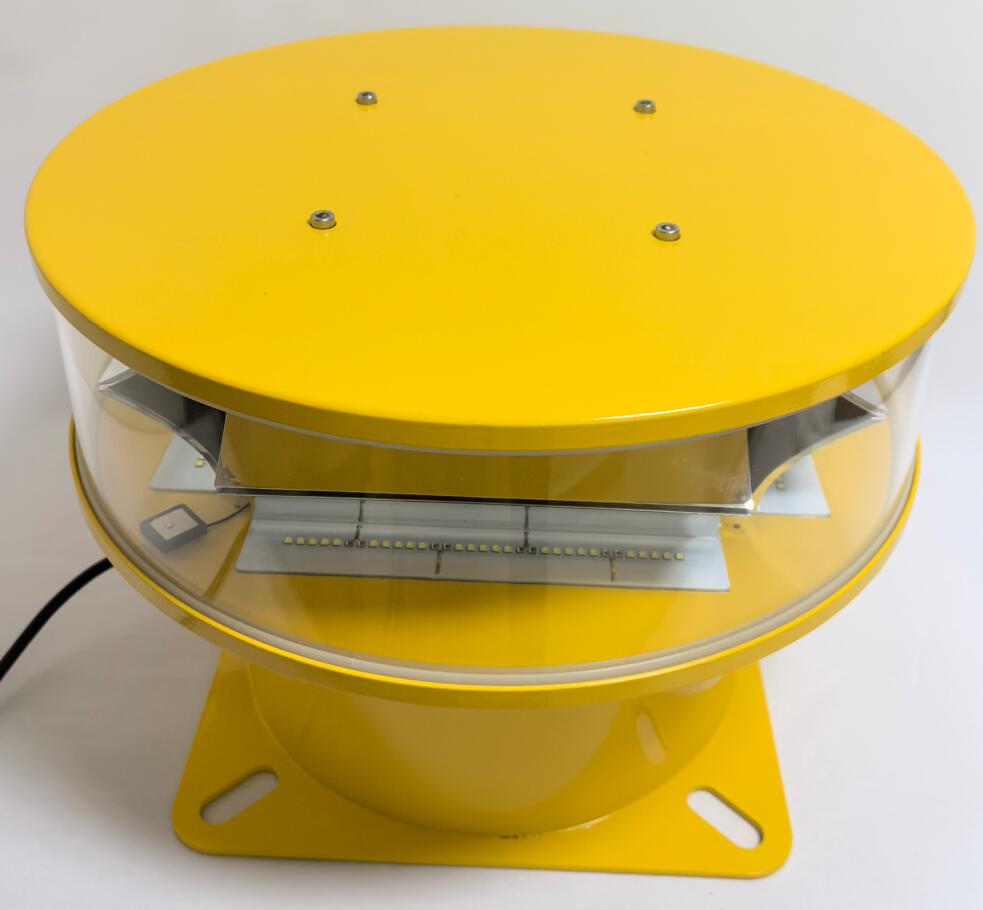Aviation Obstruction Lamp: The Critical Guardian of Airspace Safety in Modern Infrastructure
As global urbanization accelerates and skyscrapers, wind turbines, and telecommunication towers proliferate, aviation obstruction lamps have become indispensable for preventing mid-air collisions. These specialized lights ensure that tall structures are visible to pilots, especially during nighttime or adverse weather conditions. This article explores the technology, regulations, and innovations shaping today’s aviation obstruction lamp industry.
1. Why Aviation Obstruction Lamps Matter
Aviation obstruction lamps serve three vital functions:
Collision Prevention: Mark tall structures (e.g., buildings, cranes, wind farms) to alert aircraft.
Regulatory Compliance: Meet FAA (US), ICAO (global), and EASA (Europe) standards.

24/7 Reliability: Operate continuously in extreme weather (hurricanes, snowstorms).
Without these lights, structures above 200 feet (61 meters) pose severe risks to low-flying aircraft.
| aviation obstruction lamp | aviation obstruction lamps |
2. Types of Aviation Obstruction Lamps
Type Intensity Visibility Range Best For
Low-Intensity (L-810) 32.5 cd 3-5 nautical miles Structures <150 ft (45 m)
Medium-Intensity (L-864) 20,000 cd 5-10 nautical miles 150-500 ft (45-152 m)
High-Intensity (L-865) 200,000 cd 10-20 nautical miles Skyscrapers, offshore rigs
Note: Dual lighting (red + white strobe) is often required for structures >500 ft.
3. Cutting-Edge Innovations
a) Solar-Powered Lamps
Reduce grid dependency, ideal for remote locations.
Example: Carmanah’s solar LED beacons (10-year battery life).
b) Smart Monitoring Systems
IoT-enabled lamps transmit real-time diagnostics (e.g., bulb failure, voltage issues).
Predictive maintenance cuts downtime by 50%.
c) Adaptive Lighting
Adjust brightness based on ambient light/fog conditions.
Saves energy while maintaining compliance.
4. Key Regulations (2024 Updates)
FAA AC 70/7460-1L: Mandates synchronization for multi-light installations.
ICAO Annex 14: Requires dual lighting for structures >150m.
EASA CS-ADR-DSN: Stricter cybersecurity for networked systems.
Non-compliance fines exceed $10,000/day in the US.
5. Top 5 Buying Considerations
Certification: Ensure FAA/ICAO/EASA compliance.
Durability: Look for IP66+/IK08 ratings (dust/impact resistance).
Power Source: Solar vs. electric trade-offs.
Maintenance: LED lamps last 100,000+ hours vs. halogen (5,000 hrs).
Warranty: 5+ years for high-quality models.
6. Case Study: Burj Khalifa’s Lighting System
120+ L-865 lamps across 3 elevation zones.
Automatic cleaning system prevents sand buildup (critical in Dubai).
0 failures since 2010 installation.
7. Future Trends
Li-Fi Integration: Transmit data via light pulses (tested by Airbus).
Drone Maintenance: UAVs replace manual inspections for offshore lamps.
AI Optimization: Dynamically adjust flash patterns for air traffic density.
Aviation obstruction lamps are evolving from simple warning devices to smart, sustainable safety systems. As urban and renewable energy projects grow, demand for high-performance, compliant lighting will surge. Investing in advanced solutions today ensures long-term airspace safety and regulatory compliance.
